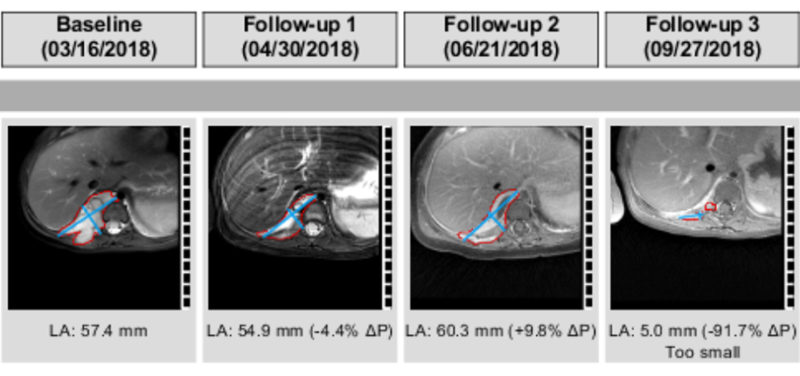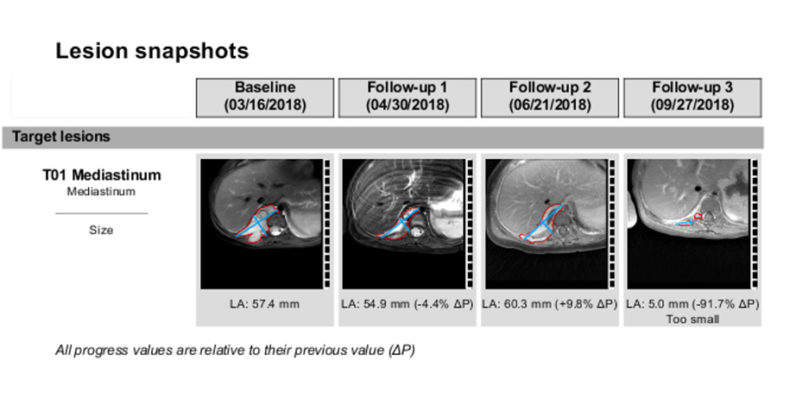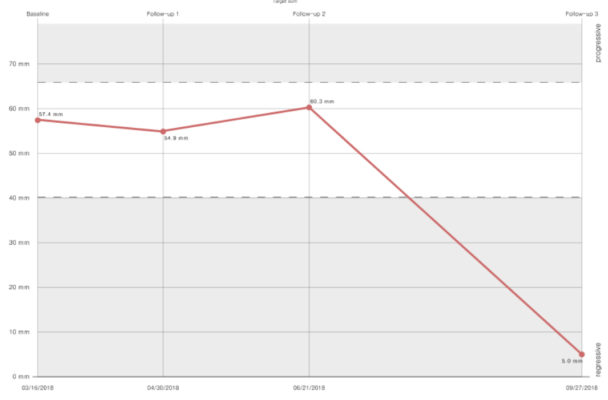
Here in the Department of Radiology at Cincinnati Children’s, we work hard every day to find better ways to help care for children. Children who are diagnosed with cancer often require frequent radiology studies. As radiologists, we work closely with our colleagues in Oncology (doctors that specialize in treating cancer) to help our childhood cancer patients be as healthy as they can be. One of our most important jobs is to help the oncologists know if their treatment is working. We recently started using a new, cutting-edge computer tool that helps us do this job better.

We are the first pediatric radiology department in the country to use a new computer tool called “MINT” to help us better track measurements of tumors (cancers) on computed tomography (CT) and magnetic resonance imaging (MRI). Using this tool, we are able to more accurately and consistently track the size of tumors, which allows the oncologists to know if their treatment is working or if they need to change to a different type of medication or therapy.

This is how it works: the radiologist loads the child’s CT or MRI into the computer program and then uses a tool to outline the tumor’s borders. The MINT program then automatically finds the largest size of the tumor (an important part of telling if treatment is working) and records that measurement. The program stores the measurement, as well as the exact image where it was measured, so that the next time the patient has a CT or MRI, the radiologist knows they are comparing the right measurements. The MINT program also makes charts and graphs that allow the radiologists and oncologists to see the change in size of the tumor over time.
By being innovative and using this new, cutting-edge computer program, we here at the Department of Radiology at Cincinnati Children’s are helping to take better care of our patients with cancer.
Contributed by Dr. Ethan Smith and edited by Alyssa (McAfee) Collins, (Coordinator-CT/MR).
